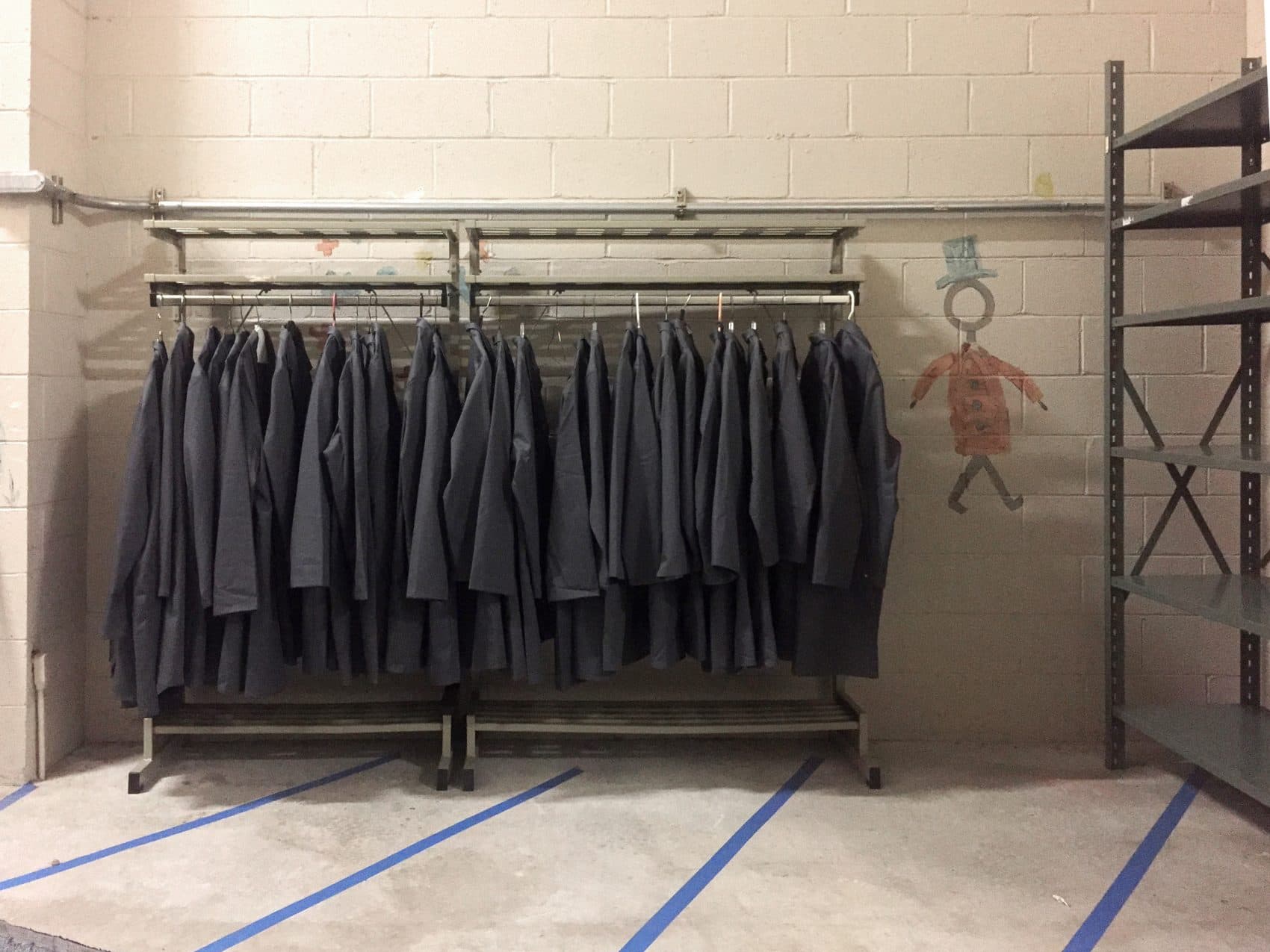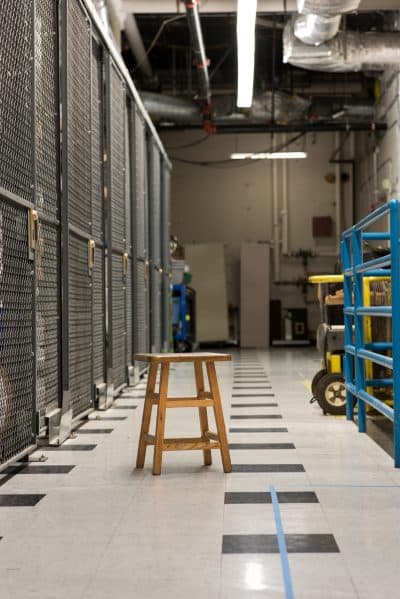Advertisement
Arbitrary And Enigmatic, 'Waiting Rooms' Captures A Mood — And Its Visitors

It's a Wednesday night at the Museum of Science in Boston, and small groups of adults are wandering through the halls. Lines of blue tape lead to different rooms — including some, like storage rooms and labs, that are usually closed to the public.
Each room presents a series of games: some are well-known like hangman or bingo, or newly made-up ones with arbitrary rules. "Winners" get a few pennies, or tickets that let them advance to the next room.
In one room, for example, people get lined up by height — without explicitly being told that that's what's happening. The shortest person receives a handful of pennies and then gets to move on, along with two others he or she picks from the line.
The players move from room to room with their hard-won pennies and tickets. But there's no grand prize, and no definite end to the game.
And that’s exactly what the two creators of this winding, dystopian maze wanted to achieve.
“From a game point of view, there’s no winning. It’s an experience that when you bend or break the rules it really gets better,” says Eric Zimmerman, a game who designer co-created the project with architect Nathalie Pozzi.
“It defies the notion of what a game is, what winning is.”

This installation, called "Waiting Rooms," is just the latest in a series of after-hours programs that the museum has hosted for years in hopes of cultivating a new audience: adults.
And adults have responded. The museum staged four evenings of "Waiting Rooms" over the past couple of weeks, drawing substantial attendance each time.
But the designers' desire to eliminate any contextual clues that would imply a linear narrative, one leading to a tangible end, leaves many players irritated or confused.
“It’s been quite purgatorial,” says one Museum of Science member David Zabner.
It is indeed purgatorial for most people: going from room to room, often winding up in one they’ve already visited. Not knowing where the game ends, or if there is an end at all. Wondering if they'll win, hoping but not knowing if they even can. It’s kind of a Kafkaesque maze.
Pozzi, who is from Italy, drew inspiration from her long, often frustrating experience with the U.S. visa and immigration process.
Advertisement
But the installation really evokes any situation that creates an unsolvable frustration you can't control, like waiting at a doctor’s office or the DMV.
“It’s a way to understand how we are so under a system's control,” says Pozzi, “and how often there isn’t much you can do, other than be controlled by that system.”
But if you can't break out of such a system, she argues, you can find ways to work around it in order to accomplish what you want.

In that sense, the designers believe, the game holds up a mirror to its participants. Some follow the rules. Others bend and even break them. In "Waiting Rooms," neither way is wrong or right. But ultimately each choice reflects how people navigate constrained systems in their own lives.
“As a game designer, the sweetest pleasure is seeing people think of ways to play the game you couldn’t have ever thought of,” says Zimmerman.
For the designers, one of the hardest parts about “Waiting Rooms” was figuring out what to call it without misleading the public about what it really is. It’s not entirely a game or an interactive exhibit, nor is it exactly an art installation. But they couldn't find any one term that really captured the experience.
“Sometimes it's nice to do things that don’t fit neatly into one category,” says Zimmerman.
Pozzi and Zimmerman are breaking a few rules themselves: not only of what a traditional game is, but also of what a museum exhibit can be.
“It stretched every rule that this bureaucracy has,” says Lisa Monrose, the museum’s producer of adult programs and exhibits.
“Waiting Rooms,” first unveiled at the Rubin Museum of Art in New York, is the most experimental program the Museum of Science has tackled for its adult series. James Wetzel, the museum's co-producer of adult programs, experienced the installation in New York and thought it would be a good fit here.
"The most rewarding comments I’ve gotten at the end of the night are 'I can’t believe this is happening at the Museum of Science,' " Wetzel says. And that's exactly what he's hoping to accomplish with the adult programs.
“People keep asking us if we’re going to mount it again,” says Monrose. And while you'll have to wait to find out — "Waiting Rooms" is gone for now — the waiting might just pay off.
Or it might not. That's the nature of the game.
